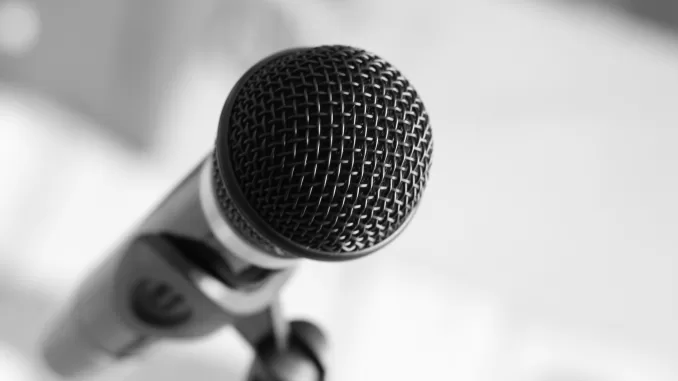
Whether you’re a musician, podcaster, or content creator, choosing the right microphone is crucial for achieving high-quality audio. With so many options on the market, it can be overwhelming to know where to begin. This guide will help you navigate the key factors to consider when selecting the best microphone for your specific needs.
Determine Your Purpose and Environment.
Before selecting a microphone, it’s important to determine your purpose and environment. Are you recording vocals, instruments, or dialogue? Will you be recording in a quiet studio or a noisy environment? These factors will impact the type of microphone you need. For example, a condenser microphone is excellent for capturing vocals and acoustic instruments in a controlled environment. In contrast, a dynamic microphone is better suited for live performances or recording in noisy environments. Consider your specific needs and choose a microphone that best suits your purpose and environment.

Consider the Type of Microphone.
The type of microphone you choose will depend on your specific needs and the environment in which you will be recording. There are several types of microphones to choose from, including condenser, dynamic, ribbon, and USB microphones. Condenser microphones capture vocals and acoustic instruments in a controlled environment. In contrast, dynamic microphones are better suited for live performances or recording in noisy environments. Ribbon microphones are known for their warm, natural sound and are often used for recording instruments like guitar amps and drums. USB microphones are an excellent option for those who want to record directly into their computer without additional equipment. Consider your specific needs and choose a microphone that best suits your purpose and environment.
Look at the Polar Pattern.
When choosing a microphone, it’s important to consider the polar pattern. The polar pattern refers to the microphone’s directionality and how it picks up sound. Three main types of polar patterns exist: cardioid, omnidirectional, and bidirectional. Cardioid microphones are the most common and are great for recording vocals or instruments in a controlled environment. Omnidirectional microphones pick up sound from all directions and are great for recording ambient sounds or group performances. Bidirectional microphones pick up sound from the front and back of the microphone. They are great for recording interviews or duets. Consider the recording you will be doing and choose a microphone with the appropriate polar pattern.
Check the Frequency Response.
Another essential factor to consider when choosing a microphone is the frequency response. The frequency response refers to the range of frequencies that the microphone can pick up and reproduce accurately. Different microphones have different frequency responses; some are better suited for certain types of recordings than others. For example, if you are recording vocals, you may want a microphone with a frequency response that emphasizes the mid-range frequencies, which are important for clarity and intelligibility. On the other hand, if you are recording instruments, you may want a microphone with a broader frequency response that can capture the full range of sounds produced by the instrument. Be sure to check the frequency response of any microphone you are considering to ensure it is appropriate for your needs.
Here you can find a more detailed Guide to Audio Recording for Beginners.
Think About Connectivity and Compatibility.
When choosing a microphone, it’s important to consider how it will connect to your recording device. Some microphones use USB connections, while others use XLR cables. USB microphones are generally easier to set up and use. Still, they may not offer the same level of audio quality as XLR microphones. XLR microphones require an audio interface or mixer to connect to your recording device. Still, they offer more flexibility and control over your audio. Additionally, it’s important to ensure that the microphone you choose is compatible with your recording device and software. Check the specifications of both the microphone and your device to ensure that they are compatible before making a purchase.
